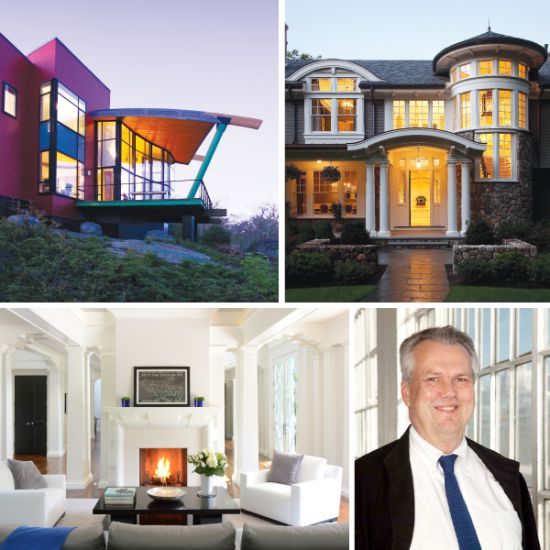Meet 2015 New England Design Hall of Fame Inductee Marcus Gleysteen
November 6, 2015
Text by Erin Marvin

Marcus Gleysteen didn’t intend to become an architect. He studied sculpture in college and taught art in New York after graduation. It wasn’t until he visited Italy in his early twenties and saw the likes of Giotto’s tower in Florence and Michelangelo’s St. Peters in Rome that he realized all of his favorite Renaissance artists were also architects.
“In their time, artists like Giotto and Michelangelowere so unbelievably radical,” says Gleysteen. “They were extraordinarily creative and inventive, and did things no one else dreamed of. That is what makes them such great models to follow.”
So the artist went back to school to study architecture, and today continues to be influenced by architects who can produce spaces that become works of art. While Renaissance artists may have first opened his eyes to architecture, in his current work he also looks to early modern and Scandinavian-modern design influences. This balance of traditional and modern forms permeates his diverse portfolio. “I am always inspired by the combination of timeless design principles with new forms, materials, and technology,” he says.
Gleysteen designs both modern and traditional houses, his creativity and an extraordinary attention to detail being the common threads in his work, no matter the style. “The main difference between a modern and a traditional house is the shape of the roof and the arrangement of windows, and the fact that one house will have a lot of trim and the other house won’t,” he says. “The differences are only skin deep.”
Gleysteen enjoys pushing design boundaries with his clients to get the best possible outcome. “Even when people say they know what they want, they may not be aware of other opportunities,” he says. “A big challenge for us is getting clients to open their eyes to the extraordinary architecture opportunities that exist. We’re constantly fighting a desire for clients to go with the comfortable and familiar.”
Whichever style they choose, a common refrain from Gleysteen’s clients is that his houses are very beautiful—but also very livable. Even as he pushes design boundaries, he never loses sight that these homes are made for living, and he takes great care to ensure that every aspect, from exterior facade to interior millwork, supports and reflects each client’s lifestyle.
Share
![NEH-Logo_Black[1] NEH-Logo_Black[1]](https://b2915716.smushcdn.com/2915716/wp-content/uploads/2022/08/NEH-Logo_Black1-300x162.jpg?lossy=1&strip=1&webp=1)






